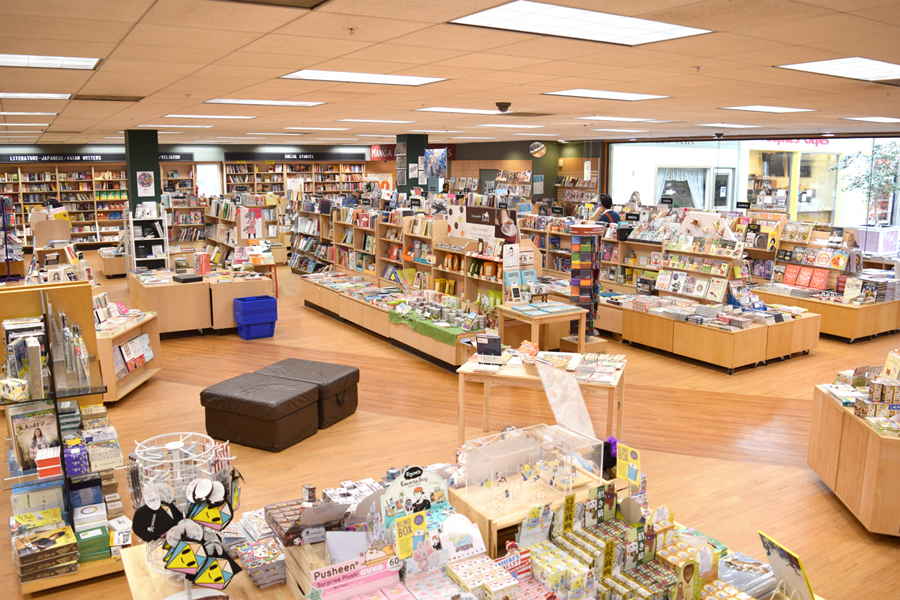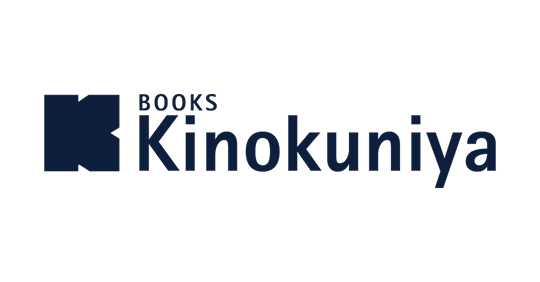I’ve already posted about my favorite indie bookshops here in San Francisco (haven’t I?), but I now must add Silver Sprocket to my list. They run a great comic book shop (and are a publisher, a pro-bike organization, and a bunch of other things).
Bookstore: Kinokuniya (San Francisco)

Oh, how I have missed browsing in bookstores!
While I have been vigilant about ordering books I want online from my local booksellers, visiting an actual bookstore is a very different experience. I go in wanting something in particular, but usually find something within each local shop’s speciality that also interests me, and so I expand my worldview by another, unexpected book.
My first physical visit to a bookstore since restrictions were lifted was to Kinokuniya. I went in to order an illustrated book published only in Japan, and came out with an armful of other books and a box of (intimidating) Japanese kanji flash cards. I have been shopping at Kinokuniya since the 1990s (!), when it was my go-to source for Japanese architecture books, and always find something I enjoy.

Most of my purchases are from their design section, which is what I go to them for most. There is something about the collection that they stock, beyond even items that are specific to Japan, that really aligns with my photographic habits, my ‘collectors eye.’ Many of the books they choose to stock have a savvy, design-documentary bent with great photos/illustrations.
It is the sort of bookstore where you would go if you were looking for a heavily illustrated book about a certain coat, a certain kind of door, a certain font, a certain COLOR. There are entire books that are just about logos that are rendered in metallic silver; there is another book in that same series for logos that use neon colors…
While their collection of Japanese language magazines is impressive, they also stock design-savvy US items, such as the stunning coffee culture magazine, Drift (driftmag.com). A magazine exclusively about one beverage, where all of the urban photography and writing centers on the theme of coffee. Do you see how this fits?
Depth, specificity, great photography, a nearly obsessive focus…
It’s also great to see what is popular for Japanese readers, whether or not those items are ever translated into English. (My Japanese is very basic, but I am someone who periodically buys foreign language publications for the photography.)
While ‘western’ publishers love to publish books about exotic details of Asia, ‘eastern’ publishers put out the exact same books on the exotic details of Europe. I saw great examples here. I love the idea that everyone can find someone else’s location and culture exotic & stylish, and then photograph them in a way that glorifies those other cultural touchpoints. Pale children in chunky-knit sweaters sit on oatmeal colored chairs while holding eggshell textured ceramics to set a Scandinavian tone – this is a design fetish perfectly rendered, with the sort of freshness that we all hope for when documenting for our home audiences. I love it, love it, love it.
I am happy to be able to visit bookstores in person again, and felt delighted (and safe!) during my visit to Kinokuniya. I am looking forward to my order arriving, so I can return to pick it up – and browse again.
Books: Audiobooks that support your local bookshop
There are times when I want to read a book, there are times when I won’t do my chores if I have the option of a reading a book, and there are times when one of my neighbors shouts her conversations immediately outside one of my windows, distracting me from my reading. The solution to these awkward circumstances is: listening to an audiobook.
Audiobooks from megacorporations don’t support my beloved local bookshops, but Libro.fm does. Libro.fm sends a portion of my purchases to a specific local affiliate shop of my choosing. (I see you, Green Apple Books!) I recently signed on with them, and recommend their service, website, and app (<– referral link, if you are into that).

Audiobooks aren’t a new idea: even in my childhood (geologic ages ago), there were books on record or audio cassette (now you know my age) that were like radio story programs. They relied entirely on dramatic readings and cool sound effects! There were also tapes I could play along with children’s books, with child-appropriate character acting, and a chime when it was time to turn the page, to give tired parents a break from reading the same story in dozens of voices YET AGAIN. (I still have songs from Winnie the Pooh and the Blustery Day and Jungle Book memorized… ) Current publishers have the author or other skilled voice actor read mainstream, contemporary books, either condensed or full (unabridged), in an up-to-date, relying-on-the-words way. I still love, purchase, and collect BOOKS, of course; audiobooks are just a nice way to enjoy a book once eye fatigue from work has set in. Audiobooks can be well-produced and enjoyable as an experience in their own way.

